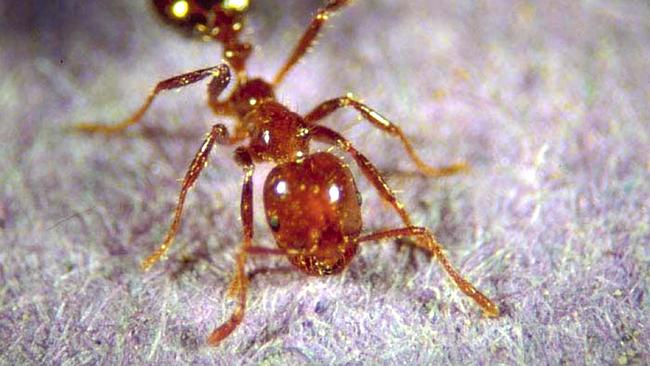Fears as invasive red fire ants detected at Queensland’s Scenic Rim
BBQs, sports and thongs are under threat from invasive pests which have been detected outside a containment zone.

IMAGINE not being able to wear thongs or enjoy a game of backyard cricket with your mates.
It sounds very much like a bleak, dystopian future for many Australians, but the outdoorsy way of life which this great nation is known for is under threat from one of the world’s most invasive pests.
Red fire ants — which have now worryingly been detected outside a containment zone in Queensland’s Scenic Rim — could destroy crops and ruin outdoor pursuits if they become widely established in the Sunshine State.
If this becomes a reality, it is feared the pesky ants could cost the state’s economy $45 billion.
“Fire ants attack indiscriminately, potentially destroying the way of life for many Queenslanders and costing the state $45 billion over 30 years,” Queensland Farmers’ Federation president, Stuart Armitage told The Guardian today.

“It may not be well understood, but if fire ants become permanently established, people in affected areas wouldn’t be able to enjoy our natural amenity or recreational areas. That means no camping, no barbecues on the lawn, no backyard cricket and no outside pets.
“Vast areas of the state’s natural environment, including world heritage areas and national parks, are prone to fire ant invasion.”
The highly aggressive species swarms its victims in a stealthy blitz — inflicting thousands of bites which can lead to anaphylaxis, a severe allergic reaction in humans. In the US alone, 85 people have died from fire ant bites.
“Fire ants are a social menace because of their sting,” Queensland Department of Agriculture and Fisheries warns. “Encounters with fire ants usually involve dozens of ants moving quickly and undetected. By the time they sting, a large number of ants could be on your body, all stinging at once.
“Stings from fire ants can cause a painful, burning itching sensation, which can last for up to an hour. Multiple stings give the sensation that the body is on fire.”
If that wasn’t bad enough, even their nests are a worry.
“Mounds formed by fire ant nests can be a serious problem in lawns, sporting fields and golf courses,” the department added. “The ant’s activities and their nesting materials can cause expensive damage to sensitive electrical equipment.
“They can also affect the tourism industry as well as the export trade of restricted items with fire ant-free countries.”
Biosecurity was given a $121.6 million boost in this year’s Federal Budget and research suggests this could be money well spent.

A 2016 report estimated that if the ants were not contained, the infestation would affect at least 20 sectors of the economy. It recommended ramping up funding for the eradication program to $380 million over a decade, finding that every dollar spent on eradication would save $25 later on.
In July last year, the national eradication scheme was cemented for a further 10 years at a cost of $411.4 million, with all states and territories contributing.
However, the government’s response to the potential economic and environmental disaster has been criticised.
“It’s only going to get worse as the current emerging pests spread throughout the landscape and as new ones arrive,” Andrew Cox of the Invasive Species Council told The Guardian. “We still haven’t turned off the tap while we’re cleaning up the mess. Our biosecurity system is not strong enough for the environment.”
According to the Queensland Department of Agriculture and Fisheries, fire ants are originally from South America and are native to the floodplains of the Paraguay River in Brazil, Paraguay and Northern Argentina.
They entered the southern United States in the 1930s, probably in soil used as ship ballast, and have been spreading across the US ever since.
“Fire ants would have been unknowingly imported into Brisbane, possibly up to 20 years ago,” the department stated in a report. “The pathway of entry into Brisbane is unknown, but was possibly in a shipping container from the United States. They were first detected in the Brisbane area in February 2001.”
For more information about identifying and eradicating red fire ants, as well as information on how to treat stings, visit the Queensland Department of Agriculture and Fisheries website.
Sightings of red imported fire ants can be reported by calling Biosecurity Queensland on 13 25 23.




